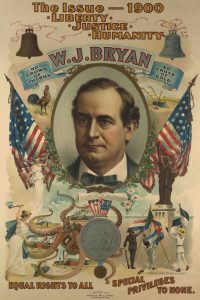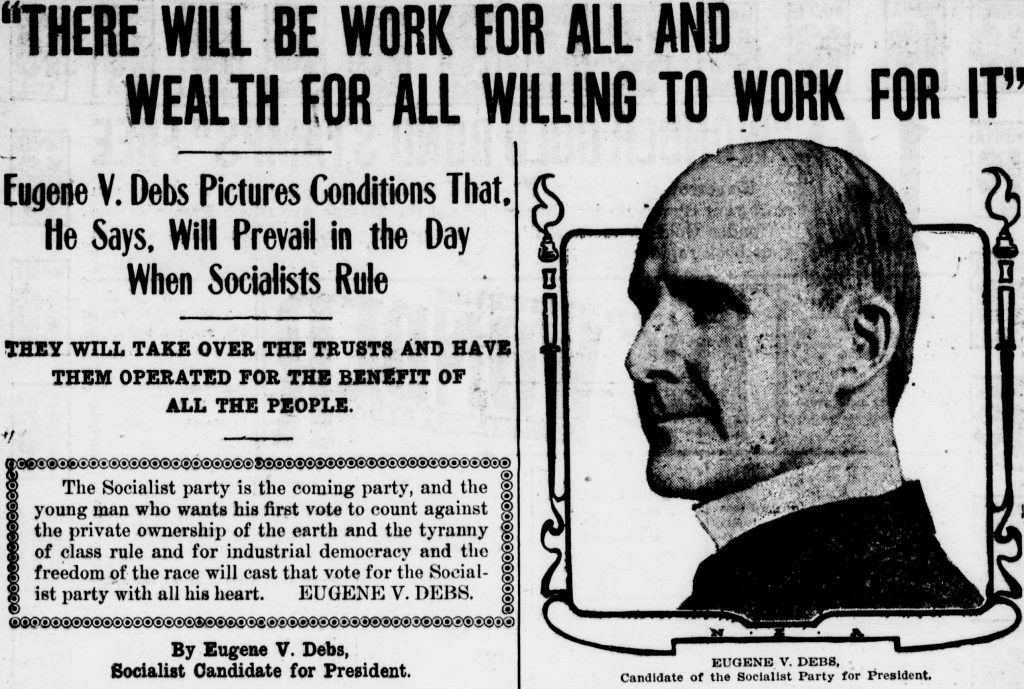In the backwash of the impeachment scandal and the cowardly vote by seven Republicans, there is increasing talk of a new MAGA or Trump third party. Without question, the Republican Party is corrupt, feckless, and largely gutless. It is very nearly a part of the Uniparty. But Donald Trump has rejected any association with a third party.
Why? A third party is seemingly a no-brainer. Over and over, the GOP has proven either unwilling to change or deeply in bed with the Deep State. Republican “leaders” (i.e., those whom the Hoax News runs to any time they want to quote a Republican) have proven hostile to MAGA and Trump issues. Most are receiving money from either China or big pharma. It should be easy to toss these bilgebarrels over the side, right?
Not so fast.
What is the history of third parties in America? With the beginning of the “Era of Good Feelings” (1826) in which there was only one real political party, the “Democratic-Republicans.” As I have written in other places, the incident that changed this and started the “Second American Party System” was the Missouri Compromise. Martin Van Buren, to prevent a civil war over slavery, created a new Democrat Party to reward both pro-, and anti-slave, voters with “spoils” or the patronage system. Briefly, the Democrats had an opponent, the Whigs, but they (like the Democrats) refused to confront slavery in any way, laying themselves open to a genuine opposition party that sought to end slavery. That was the Republicans in 1855.
 Whig campaign print for William Henry Harrison and John Tyler during the presidential election of 1840, playing up Harrison's common man persona with log cabin and hard cider imagery. Library of Congress, Washington, D.C. (reproduction no. LC-DIG-ds-00706)
Whig campaign print for William Henry Harrison and John Tyler during the presidential election of 1840, playing up Harrison's common man persona with log cabin and hard cider imagery. Library of Congress, Washington, D.C. (reproduction no. LC-DIG-ds-00706)
It is important to understand that when they appeared, the Republicans were not a “third party,” but the second party: the Whigs had disappeared. Moreover, two other “third parties” or alternative parties—the Liberty Party and the Know-Nothing Party—failed because while they opposed slavery, they had no other platform items and therefore were a “single-issue” party.
The key point is that when the Republicans arrived on the scene, they were on the same playing field of patronage and spoils as the Democrats. This required each party to stay fairly close to the magic 51% of the vote: if too far away, there would be no patronage or jobs to distribute. Such jobs not only came from government positions but also paid party positions. But to distribute such jobs, the party had to win or have a chance of winning. Neither party could afford to languish too far away from the 51% range, for if they did, supporters would become discouraged and leave the party.
 Over time, a number of third parties tested this system. First—and one of the most successful—was the Populist Party that came from “Farmer’s Alliance” parties in the early 1890s. In 1892, the Populists ran James Weaver for President and won 8.5% of the vote. But Populists won few spots at the lower levels of government and had weak state party systems. In 1896, they collapsed entirely when their chosen candidate, William Jennings Bryan, ran as a Democrat. After 1896, the Populists ceased to be any kind of force.
Over time, a number of third parties tested this system. First—and one of the most successful—was the Populist Party that came from “Farmer’s Alliance” parties in the early 1890s. In 1892, the Populists ran James Weaver for President and won 8.5% of the vote. But Populists won few spots at the lower levels of government and had weak state party systems. In 1896, they collapsed entirely when their chosen candidate, William Jennings Bryan, ran as a Democrat. After 1896, the Populists ceased to be any kind of force.
At around the same time, the American Socialist Party had drawn considerable support. It was formed in 1901 through a merger of the Social Democratic Party (founded three years earlier) and groups from the Socialist Labor Party. Typical of many third parties, its ideological purity led it to prevent members from forming outside coalitions or alliances. It wasn’t until 1912 that the Socialists ran a major presidential candidate, Eugene V. Debs. He won 6% of the vote, but Socialists carried no local or state offices, had no jobs to give away, and no impact whatsoever on policy. True to form, by the election of 1916 the Socialists’ vote fell by half, to 3%. It was a pattern to be repeated by almost all third parties.
The problem with third parties is, besides the unwillingness to compromise to advance the party’s goals, without jobs to give away—and without hope of ever having any jobs to give away in the near future—support immediately goes elsewhere. Only the “true believers” remained, and in any party, those never reach above 30% of the total party membership. Others support parties as the lesser of two evils, or because one party or another supports a specific issue, or because of successful campaigns. Purists cannot sustain any party above a very low, non-winning level. That explains why both the Socialists and the Libertarians are still with us today: the tiny core of purists never really intends to win an election or even compete seriously.
 The repeated historical declines of these third parties have almost nothing to do with their ideas or policies and everything to do with their inability to keep a structure in place with dedicated party workers who can look forward to something besides losing elections. It is absolutely essential, due to the “winner take all/single-member district” structure of American government (which no third party can repeal) that there are not “near” winners. You either win or lose. We do not have proportional representation in our states or our House of Representatives. Unless the Republican Party completely vanishes, the only way for a MAGA movement to succeed is from inside the GOP. It must eat it from the inside out like the creature from “Alien.
The repeated historical declines of these third parties have almost nothing to do with their ideas or policies and everything to do with their inability to keep a structure in place with dedicated party workers who can look forward to something besides losing elections. It is absolutely essential, due to the “winner take all/single-member district” structure of American government (which no third party can repeal) that there are not “near” winners. You either win or lose. We do not have proportional representation in our states or our House of Representatives. Unless the Republican Party completely vanishes, the only way for a MAGA movement to succeed is from inside the GOP. It must eat it from the inside out like the creature from “Alien.



